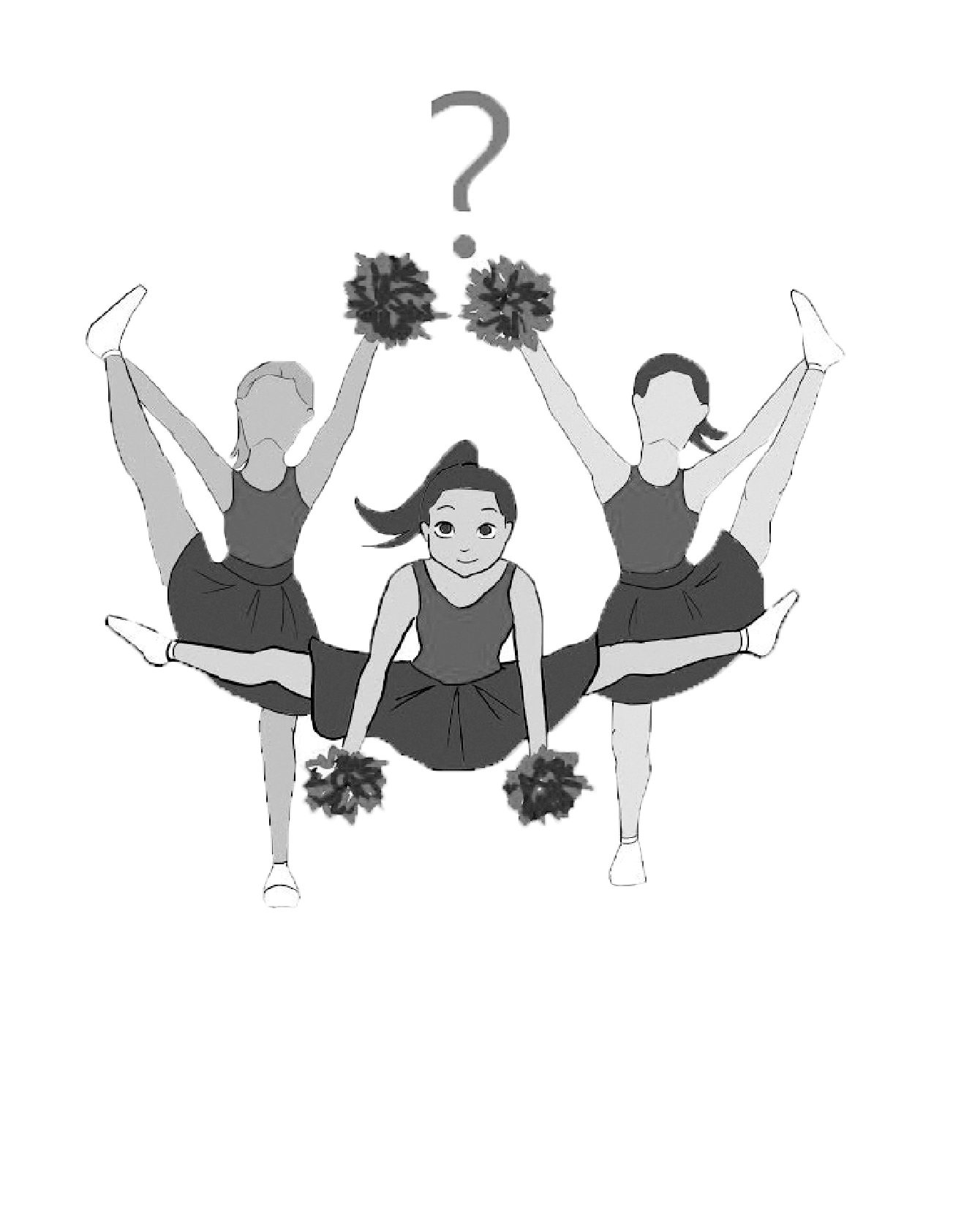
Forty years ago, cheerleaders were known for two things: sex appeal and dance moves. Squads cheered on football teams and provided entertainment through their performances at halftime, but these dances were nothing like the stunt-filled routines we see today. Over the past couple decades, cheerleading has transformed. In fact, on Dec. 6, cheerleading was given provisional status by the International Olympic Committee, giving the International Cheer Union the ability to petition for cheerleading to become an Olympic sport in the future.
But the possibility of cheerleading becoming an Olympic event brings up a controversial question: Is cheer a sport? Cheerleading consists of a wide range of levels, and should be considered a sport on a case-by-case basis.
Before it can be determined if a specific cheer team qualifies as a sport, there’s another question that must first be answered: What is a sport?
If you ask someone to name a sport, common responses will include basketball, soccer and football. A “sport” is perceived to be a physical activity involving games or matches. Therefore, the definition of a sport can be simplified to three main parts: First, a sport must be a physical activity. Second, those participating in a sport must compete. Lastly, the competition or contest participated in must determine a winner, along with a specific rules defining limits of the competition, ensuring a fair contest.
The importance of competition is crucial to whether or not an activity is deemed a sport. The third element of a sport, having a winner, can not be met without a competition. The word “sport” is not defined by a dictionary, but rather by those who use the term. A sport is thought of as an activity where one trains with the goal of winning, but it is impossible to win if there is no game or competition.
All forms of cheerleading meet the first part of the requirements to be a sport. Cheerleaders perform routines packed with jumps, stunts, tumbling and dancing, all of which are physically demanding and require practice, strength and flexibility. Therefore, it is evident that cheerleading requires a plethora of physical activity.
In the realm of cheerleading, there are four main types of teams: recreational, scholastic, all-star and professional. Recreational teams are often associated with a community center. One can sign up without tryouts, learn fundamentals and may or may not participate in competitions. These teams are often feeders to scholastic and all-star teams. Scholastic teams are teams, such as Aragon’s cheer team, that cheer on school sports teams; only about 15 percent of high school teams nationwide participate in competitions. All-star cheer teams are club teams where the team does not cheer for other sports teams, but solely participates in cheer competitions. Lastly, professional cheerleaders cheer on professional sports teams, such as the 49ers and Warriors, and do not participate in competitions.
It is important to note that not all of these teams adhere to the requirement of a contest that has a winner.
Many high school and recreational cheer programs, along with professional cheer teams, do not compete — only about 15 percent of high school teams nationwide participate in competitions.
But while not all cheer teams compete, and therefore do not meet requirement of a contest that has a winner, one example of a competitive cheer team is the Aragon competition cheer team. Along with performing at rallies and games, the team attends two or three competitions each year, including the National High School Cheerleading Championship. From watching their performances, one can see the athleticism and practice that goes into each routine. Since Aragon’s team additionally participates in competitions where they compete against other high school teams, and their performances in these competitions require a great deal of athletic training, it is clear that they do, in fact, qualify as a sport.
It is often thought that sideline cheer teams, which do not compete, should also be considered sports. After all, they are similar to gymnastics, as both involve flips, jumps and dances. However, the difference between sideline cheer and gymnastics is clear: gymnasts compete, thus meeting the competition requirement of a sport. While sideline cheer is a physical activity that involves strength, flexibility and energy, if the team does not compete, then it can not qualify as a sport.
In contrast to the Aragon competition cheer team, the Gold Rush, the 49ers cheer squad, is not a sport. While I acknowledge the significant amount of time that the cheerleaders dedicate towards maintaining their physical fitness and learning choreography, the team does not participate in competitions where there is a winner. Therefore, the Gold Rush does not qualify as a sports team, as their primary purpose is performance and entertainment.
The Gold Rush provides an example of the contrast between entertainment and sports. From Super Bowl Sunday to March Madness, it is clear that sports can be considered entertainment. However, not all forms of entertainment are sports. For example, the televised cooking competition, “Chopped,” provides entertainment and involves competition that determines a winner, but does not involve athleticism, and therefore is not a sport. Like “Chopped,” the Gold Rush performs and provides entertainment, but does not qualify as a sport.
With such a variety of cheerleading, making one claim as to whether all cheer teams are sports or not is an inaccurate generalization. Whether or not a cheer team qualifies as a sport must be determined on a case-by-case basis. The requirements of a sport are clear: athleticism, competition and a winner. If a cheer squad does not adhere to all of these criteria, then it cannot be considered a sport.




hi. cheerleading is not a sport
Sorry but you are wrong Bob. PS please make the first letter of your name capital
Put a period at the end of your sentance.
i agree, bob, thank you for this comment.
Yes it is